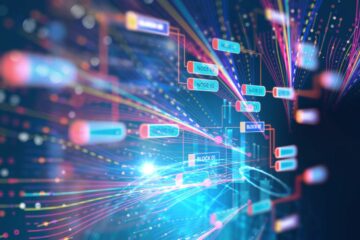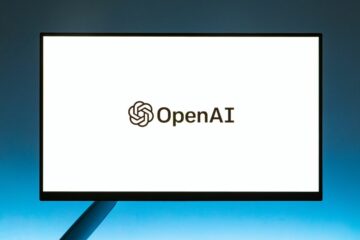
The integration of AI-powered resources and tools in education has the potential to reshape the learning landscape, offering personalized insights and rapid feedback. However, with these opportunities come critical ethical and legal concerns that educators must consider.
From unintentional data capture to the perpetuation of biases and misinformation, the risks inherent in AI implementation demand careful attention. In this context, educators play a pivotal role in safeguarding students.
While AI-created assessments can provide valuable insights, human oversight remains essential for interpreting student performance accurately. Challenges of integrating AI in education underscore the need for ongoing teacher training, vigilant monitoring, and clear policies to address AI-related incidents.
The use of AI-powered resources and tools in education also poses a risk of perpetuating questionable content through deep fakes, and disseminating misinformation. In addition, when using AI tools, educators must ensure that they are complying with student data privacy laws, such as FERPA and COPPA. Limiting data sharing steps in protecting student data must always be a priority.
As a rule of thumb, do not share any identifiable information. For example, if you are using AI for ideas to support modifications for a student who has an IEP, be sure to remove any and all information about the child’s name, date of birth, student ID number, and address. Inputting the modifications is fine, absent all this other information. A simple find/replace search can eliminate this information as you navigate AI search features.
Preventing AI-Generated Content Bias and Discrimination
I have often written about this. The problem is that an AI platform is not what generates biased content but rather, the internet ecosystem from which it captures information gathers it. Attempts to eliminate bias have resulted in embarrassing circumstances, such as Google Gemini’s embarrassing creation of images of extremes like a historically inaccurate female Pope.
A simple yet important step in protecting against AI bias includes executing a prompt with thoughtful wording, as described in steps here. Human oversight and review of AI-generated content are essential.
This relates to an ideology in AI use that I refer to as the AI 80-20 principle. That is, AI can do 80% of the work but the user must unconditionally go back and edit, revise, and check the work, and as importantly, add their literary voice.
Listed below are examples of awkward wording that show up often in AI content, along with repetitions, which are red flags that the content is both AI-generated and not edited or revised. This goes back to the important commitment we teach children: Go back to edit content and check validity, both of which are part of the larger practice of proofreading, editing, and revising. Remember, good writing takes great editing!
Awkward Wording that Often Shows Up in AI-Generated Content
- Additionally
- Unwavering
- Therefore
- Consequently
- Unrelenting
- Furthermore
- Moreover
- Adeptly
AI-Driven Assessments and Grading
AI-driven assessments and grades can provide valuable insights into student learning, but educators must ensure that these are valid and effective, which mirrors the importance of the previously mentioned emphasis on proofreading, editing, and revising.
Teachers should never, ever, rely solely or even primarily on AI for interpreting a student’s performance. Lack of context and knowledge of students is lost with AI. Use the 80/20 principle I referred to in ensuring the quality of response.
Conducting regular assessments of an AI platform’s accuracy and reliability, implementing human review and validation processes, and using multiple assessment methods, all help ensure comprehensive student evaluation.
Teacher Training and Support
Educators need training and support to effectively integrate AI-powered tools into their teaching practices. Professional development, coaching, resources and lesson plans, collaboration, and sharing of best practices, all aid educators in harnessing the potential of AI. Absent this kind of support, educators will remain lost in the sea of BIG AI, and unsure of how to respond.
While this article is a helpful resource, additional PD and updates due to the inevitable changes and developments in AI must occur. One way to accomplish this is through edcamp-style meetings for teachers. These are cost effective, engaging, and practical ways to provide continuous support and updates. In this way, intermittent Edcamp-style PD can occur, and allow excited teachers and school leaders (like me!) to provide the necessary guidance and support. Teachers benefit from practical ways to use – and not use – AI.
Addressing Concerns About AI Replacing Teachers
The integration of AI in classrooms raises concerns about the potential replacement of human teachers and staff.
Simply, AI won’t replace human teachers because it lacks the emotional intelligence and ability to form meaningful connections that are crucial for helping students learn and develop socially, academically, and physiologically. While it has the potential to provide personalized learning experiences and rapid feedback, teachers play a vital role in fostering critical thinking, creativity, and social skills, which AI cannot adequately manage (yet!).
The human touch in teaching, including empathy, moral support, and the ability to motivate through setbacks, remains irreplaceable.
The response to AI-related incidents, such as cyberbullying or AI-generated harassment, must be further developed and outlined in school Acceptable Use Policies. Helpful learning strategies can be borrowed from the methods to manage social media issues to support students in learning to make appropriate usage decisions.
Ultimately, the integration of AI in education offers tremendous potential for improving student learning outcomes, but it also raises significant ethical and legal considerations. Educators have a critical role to play in maneuvering around this complex landscape and ensuring that AI is used in ways that benefit students and respect their rights.
- SEO Powered Content & PR Distribution. Get Amplified Today.
- PlatoData.Network Vertical Generative Ai. Empower Yourself. Access Here.
- PlatoAiStream. Web3 Intelligence. Knowledge Amplified. Access Here.
- PlatoESG. Carbon, CleanTech, Energy, Environment, Solar, Waste Management. Access Here.
- PlatoHealth. Biotech and Clinical Trials Intelligence. Access Here.
- Source: https://www.techlearning.com/news/ai-ethics-and-legal-concerns-in-classrooms
- :has
- :is
- :not
- $UP
- 27
- 6
- a
- ability
- About
- absent
- acceptable
- accomplish
- accuracy
- accurately
- add
- addition
- Additional
- address
- adequately
- against
- AI
- AI bias
- AI Implementation
- ai in education
- AI platform
- AI-powered
- Aid
- All
- allow
- along
- also
- always
- an
- and
- any
- appropriate
- ARE
- around
- article
- AS
- assessment
- assessments
- Attempts
- attention
- back
- BE
- because
- below
- benefit
- BEST
- best practices
- bias
- biased
- biases
- Big
- birth
- borrowed
- both
- but
- CAN
- cannot
- capture
- captures
- careful
- challenges
- Changes
- check
- Children
- circumstances
- clear
- Cms
- coaching
- collaboration
- come
- commitment
- complex
- complying
- comprehensive
- Concerns
- Connections
- Consider
- considerations
- content
- context
- continuous
- Cost
- creation
- creativity
- critical
- crucial
- Cyberbullying
- data
- data privacy
- data sharing
- Date
- decisions
- Demand
- described
- develop
- developed
- Development
- developments
- Discrimination
- do
- due
- ecosystem
- edited
- Education
- educators
- Effective
- effectively
- eliminate
- emotional
- Empathy
- emphasis
- engaging
- ensure
- ensuring
- essential
- ethical
- ethics
- evaluation
- Even
- EVER
- example
- examples
- excited
- executing
- Experiences
- extremes
- Features
- feedback
- female
- fine
- flags
- For
- Forbes
- form
- fostering
- from
- FTC
- further
- generates
- Go
- Goes
- good
- great
- guidance
- harassment
- Harnessing
- Have
- help
- helpful
- helping
- historically
- How
- How To
- However
- HTTPS
- human
- i
- ID
- ideas
- identifiable
- if
- implementation
- implementing
- importance
- important
- importantly
- improving
- in
- inaccurate
- incidents
- includes
- Including
- inevitable
- information
- inherent
- inputting
- insights
- integrate
- Integrating
- integration
- Intelligence
- Internet
- interpreting
- into
- issues
- IT
- jpg
- Kind
- knowledge
- Lack
- lacks
- landscape
- larger
- Laws
- leaders
- LEARN
- learning
- Legal
- lesson
- like
- limiting
- literary
- lost
- make
- manage
- meaningful
- Media
- meetings
- mentioned
- methods
- Misinformation
- Modifications
- monitoring
- moral
- motivate
- multiple
- must
- name
- Navigate
- necessary
- Need
- never
- None
- number
- occur
- of
- offering
- Offers
- often
- on
- ONE
- ongoing
- opportunities
- or
- Other
- outcomes
- outlined
- Oversight
- part
- performance
- Personalized
- pivotal
- plans
- platform
- Platforms
- plato
- Plato Data Intelligence
- PlatoData
- Play
- policies
- pope
- poses
- potential
- Practical
- practice
- practices
- previously
- primarily
- principle
- priority
- privacy
- privacy laws
- Problem
- processes
- professional
- protecting
- provide
- quality
- raises
- rapid
- rather
- Red
- Red Flags
- refer
- referred
- regular
- relates
- reliability
- rely
- remain
- remains
- remember
- remove
- replace
- replacement
- reshape
- resource
- Resources
- respect
- Respond
- response
- resulted
- review
- revise
- rights
- Risk
- risks
- Role
- Rule
- s
- safeguarding
- School
- SEA
- Search
- seasonal
- Setbacks
- Share
- sharing
- should
- show
- Shows
- sign
- significant
- Simple
- skills
- Social
- social media
- Social Skills
- socially
- solely
- Staff
- Step
- Steps
- strategies
- Student
- Students
- such
- support
- sure
- T
- takes
- teacher
- teachers
- Teaching
- that
- The
- their
- These
- they
- Thinking
- this
- Through
- to
- tools
- touch
- Training
- Transform
- tremendous
- true
- underscore
- Updates
- Usage
- use
- used
- User
- using
- valid
- validation
- validity
- Valuable
- vital
- Voice
- VOX
- Way..
- ways
- we
- What
- when
- which
- while
- WHO
- will
- with
- Won
- wording
- Work
- writing
- yet
- you
- zephyrnet











